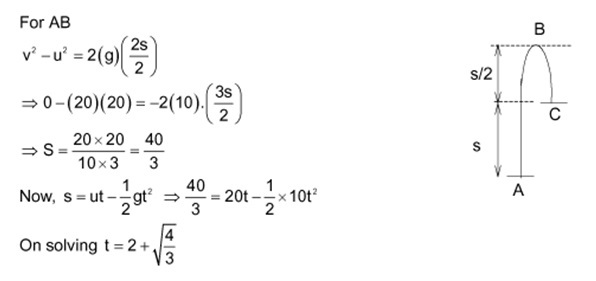Displacement Isn't Distance!
A particle is thrown straight up with a velocity of . Find the time (in seconds) from the start of motion at which the distance traveled is twice the displacement.
Use .
This section requires Javascript.
You are seeing this because something didn't load right. We suggest you, (a) try
refreshing the page, (b) enabling javascript if it is disabled on your browser and,
finally, (c)
loading the
non-javascript version of this page
. We're sorry about the hassle.

Using h = 2 g u 2 , we easily calculate h = 2 0 m
According to given condition , assuming that the object at that instant of time has travelled ( x + 2 0 ) distance and has displacement ( 2 0 − x ) ,
2 0 + x = 2 ( 2 0 − x ) ⇒ x = 3 2 0
Using s = v t 2 + 2 1 a t 2 2 ,
⇒ 3 2 0 = ( 0 ) ( t 2 ) + 2 1 ( 1 0 ) t 2 2 ⇒ t 2 = 3 4
When the object reaches max. height ,
t 1 = g u = 1 0 2 0 ⇒ t 1 = 2 sec
Hence , total time = t 1 + t 2 = 2 + 3 4